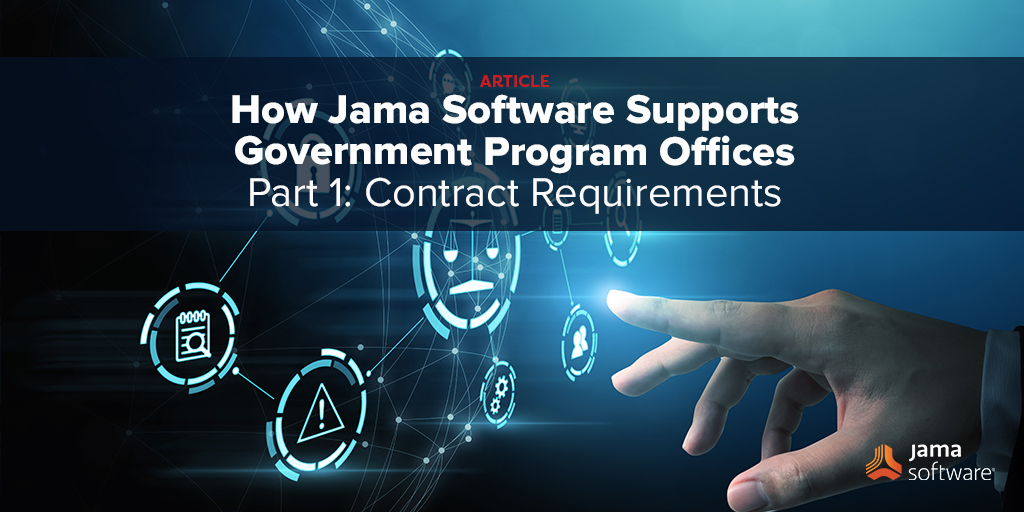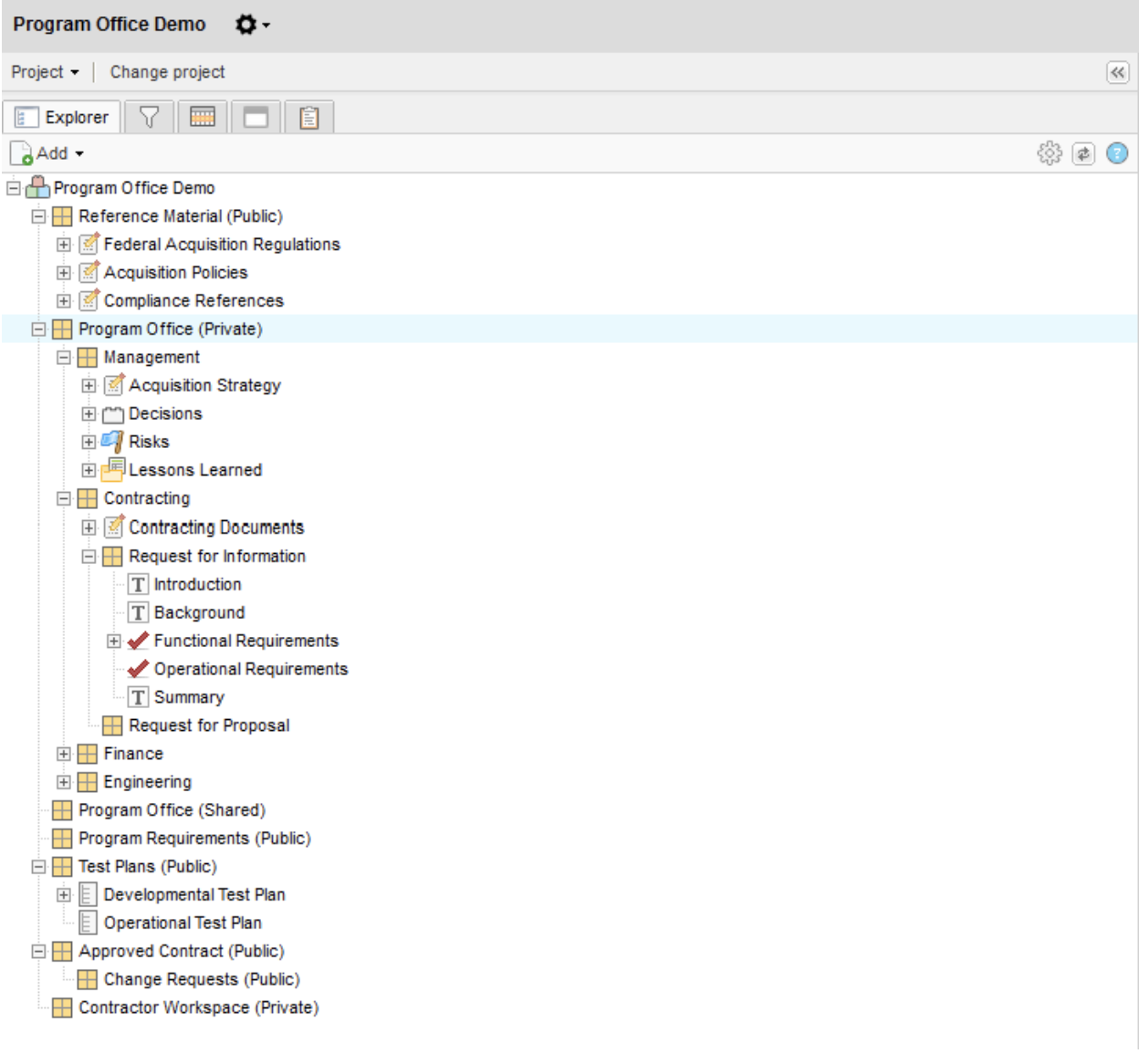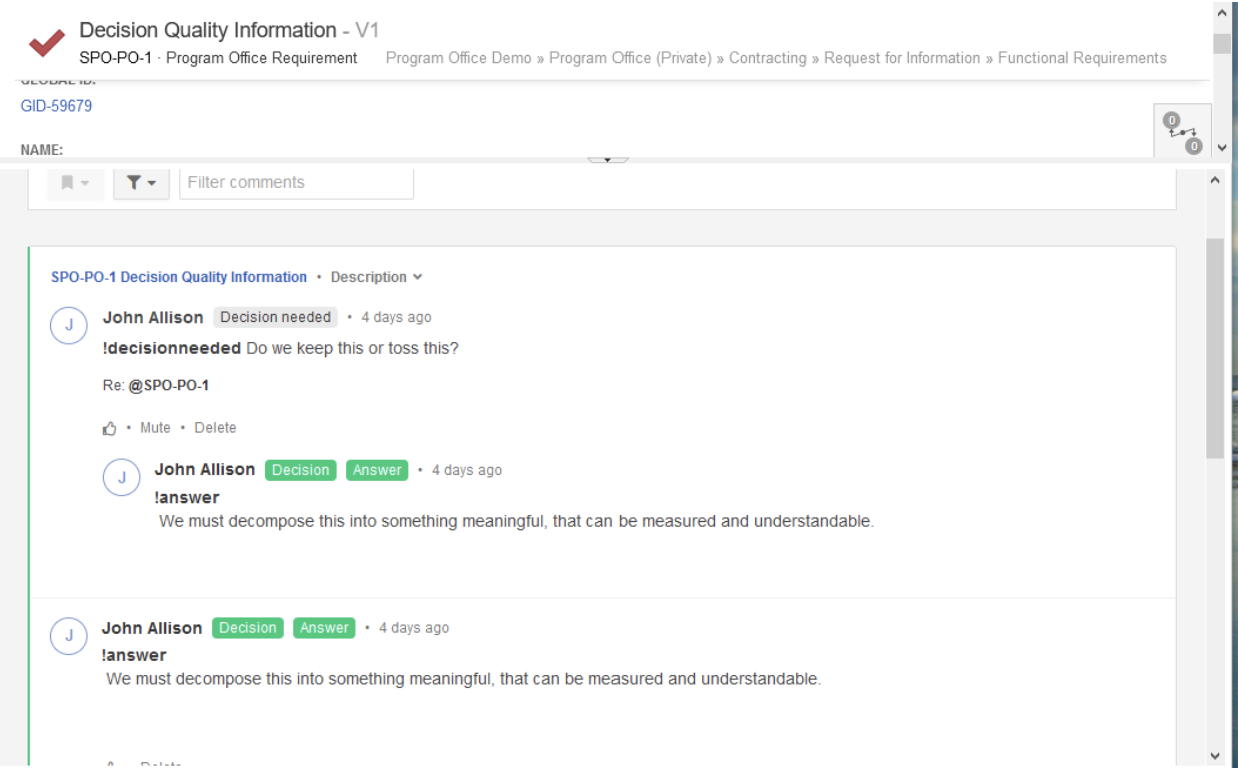
Welcome to the second post of this series – if you haven’t already, go back and read the introduction to the government program offices series to learn more about how Jama Software supports government program offices and more about me and my qualifications.
Today, we’ll be exploring the art and science of contract requirement development within federal government program offices and how Jama Connect could be used. While tailored for federal civilian and DoD program offices, many of the lessons learned here will directly apply to corporate program offices as well.
With a few exceptions, the federal government does not build anything. They negotiate contracts with civilian contractors to build things. The program office defines the contractual requirements, conducts a source selection to award the contract to the best contractor, and then manages the contractor’s performance to ensure that the requirements were met. Or at least, that is the extremely simplified version of the Federal Acquisition Regulation (FAR) process.
Today, let’s look at the two key program office requirements documents used to solicit proposals from industry, the Request for Information (RFI) and the Request for Proposal (RFP). Sometimes these documents go by different names, but I’ll stick to RFI and RFP.
The RFI is the first public requirements document used to determine if there is sufficient interest in industry such that a competitive acquisition could be done, and to solicit expert input on the initial set of requirements so the government doesn’t overlook anything that would cause problems in the acquisition later.
The RFP is the more formal requirements document used to solicit formal proposals from industry, and is the basis of the contract. It is primarily filled with boilerplate legal and contracting language, with a few tailored sections which describe the actual requirements and how the proposals will be evaluated.
The goal of the RFI is to gather information and insights from industry so you don’t screw up the RFP. The quality of the answers provided in response to an RFI is proportional to the quality of the questions asked in the RFI. The RFI is also a strong signal to industry on the seriousness and professionalism of the program office issuing the RFI, and will influence their decision to submit a well thought out proposal or not.
In general, the program office will have a set of user requirements, either generated internally to the program office or externally by the organizations the program office is supporting. It is easy to just publish an RFI with those requirements and ask the industry “can you meet these?” – but that does not provide the program office much insight. The best RFI’s are well thought out, and are asking well crafted questions to industry that not only cover the user requirements, but provide insight into gaps in the requirements, potential acquisition pitfalls that should be avoided, and to expose a range of options for how to optimize the acquisition.
So what is Jama Connect’s role in this? Jama Connect is the platform where the questions in the RFI are built, collaborated on, and optimized. For example, below is a screenshot of a sample Jama Connect project where we have the user requirements and a set of potential RFI questions. By using Jama Connect, it is now possible to effectively collaborate with stakeholders throughout the government. Jama Connect also can help organize all of the responses such that the actual lessons are learned.
The beauty of Jama Connect is that it enables continuity between the RFI and RFP. Getting input from industry is useless if it is unable to be processed and used to optimize the requirements in the RFP. The RFP is where requirements “get real,” and the set of requirements in the RFP will evolve into the formal contractual requirements. Both the program office and contractor benefit from having a well defined, objective, and easily understood requirements.
Now that industry has provided responses to the RFI, the program office, it is up to people like me to sift through all of the comments and determine what changes need to be made to the requirements prior to publishing the RFP. This is where Jama Connect shines. Jama Connect allows me to effectively evaluate each input from industry and then update the RFP accordingly. As the RFP gets closer to completion, the more scrutiny it undergoes through the wide range of government stakeholders including the program office, user representatives, test organization, legal office, contracting office, just to name a few. Jama Connect allows me to keep a single source of truth throughout this complicated review process and allows all of the stakeholders to have detailed visibility into the requirements as needed.
RELATED POST: Checklist: Selecting a Requirements Management Tool
Now is a good time to explain why Jama Connect makes a difference and why doing this in a word processor or spreadsheet just isn’t good enough. Jama Connect allows for a holistic development of the contract requirements while ensuring that only the publicly available information is released to the contracting community. This allows the program office to put everything into Jama Connect and to export only what is needed to publish the RFI/RFP, instead of spreading out this information in different documents, email traffic, memos for record, and so on.
Let’s look at one specific program office requirement, and the context that be included in Jama Connect. Remember, this isn’t just a repository of requirements, this is the place to build, collaborate, and approve requirements. In Jama Connect you write it, share it, refine it, approve it, and finally export it to the right format.
So, since I’m a former Air Force, we’ll pick on one of my favorite requirements of all time. The formally approved requirement was “The system shall provide decision quality information.” Now, as you might imagine, context is everything and thus the requirement that must be in the RFI/RFP to be useful is going to reflect the context of that higher-level requirement.
As you see, the original requirement created a lot of discussion, and was eventually replaced with more specific requirements. Not only that, we now have a way to include context related to source selection evaluation, risk, costs, and testing along with the contract. Now, this requirement in Jama Connect can be collaborated on within the government program office and other stakeholders. This means that everything is in one place, and if there is a change to the requirement, it is immediately understood as to where else that change may impact. Perhaps as important, it provides program office leadership insight into the program office’s actual understanding of the requirements and their preparation to go through a source selection.
Finally, the RFP is submitted to the acquisition authority for approval. Once approved, the contracting office will publish the RFP and the fun of source selection begins.
Stay tuned for next post in this blog series, publishing on Thursday, June 10th.
- How Jama Software Supports Government Program Offices Part VII: Contract Recompetition - August 12, 2021
- How Jama Software Supports Government Program Offices Part VI – Contractor Deliverable Management - August 5, 2021
- How Jama Software Supports Government Program Offices Part V: Test Planning - July 29, 2021

